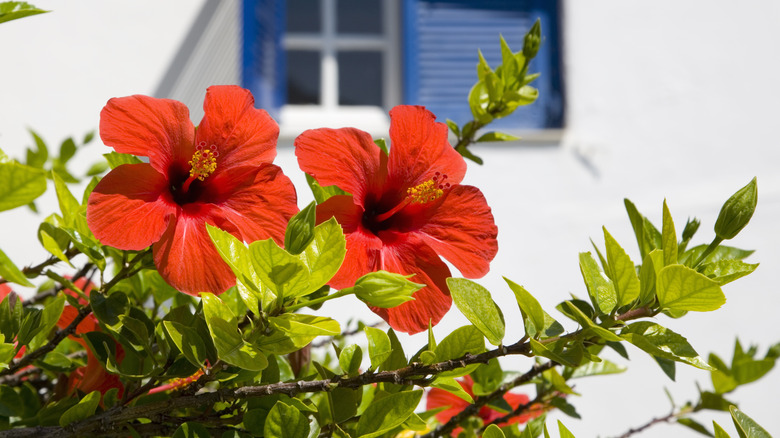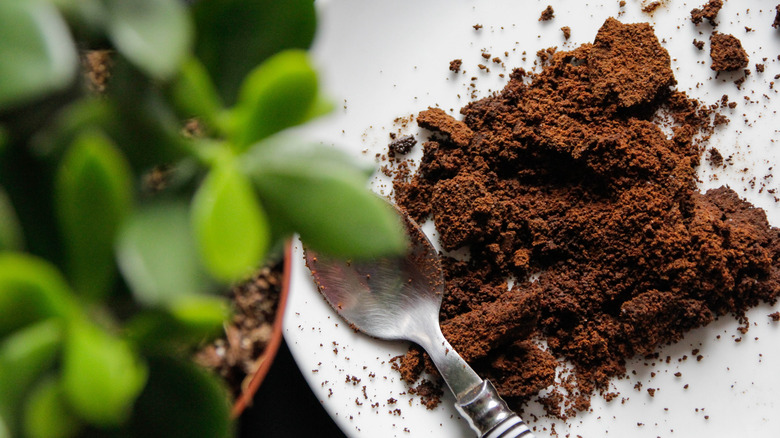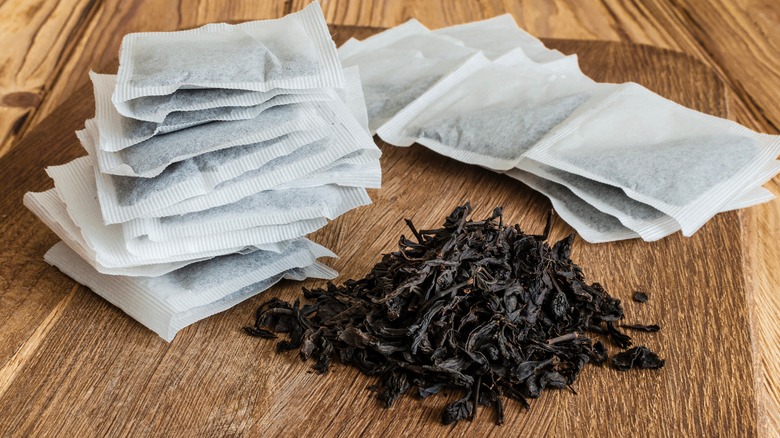Leftover Ingredients You Can Use To Fertilize Your Hibiscus Plant
It's no secret that bright and beautiful hibiscus flowers can make a garden stand out. There are literally hundreds of different types you can select to grow in beds or container gardens, and yes, they all require fertilizing to keep them healthy and filled with blooms all season long. You may have heard that ingredients like coffee grounds or tea leaves can be used to feed your hibiscus plants, and there's some truth to that. These kitchen leftovers can indeed supply some of the nutrients your flowering plants need to thrive. And what about using banana peels? As it turns out, those are usually better left to the compost bin where they'll decompose and impart their nutrients nicely.
When it comes to the types of hibiscus that enjoy kitchen leftovers as a supplement, a popular one is the tropical Chinese hibiscus (Hibiscus rosa-sinensis), which can be grown in containers — especially if you are considering taking them inside for the winter – or planted in garden beds in warm climates (zones 9 to 11). Hardy hibiscus (Hibiscus moscheutos) is a perennial that grows in a broader area of North America (zones 5 to 9) and is often used as a hedge or border plant in landscaping, just like the rose of Sharon (Hibiscus syriacus) — the shrub of the perennial hibiscus family. There are a few tips to keep in mind when fertilizing hibiscus with ingredients from the kitchen, but all in all its easy to repurpose some of these items in your garden instead of throwing them out.
More on using coffee grounds as hibiscus fertilizer
As far as soil supplements go, a good amount of potassium and a moderate amount nitrogen are essential to growing a healthy hibiscus plants. Luckily for java drinkers who also enjoy gorgeous hibiscus blooms, one of the leftover kitchen staples that help hibiscus plants thrive is used coffee grounds. After making your morning cup of joe, you can dry the grounds and then add them to your hibiscus to provide nitrogen along with some other micronutrients like potassium. Work the grounds into the soil from about ½ to 4 inches deep. When sprinkling them on top of soil around landscaping plants, consider adding some mulch made from bark to help hold in moisture as the grounds may repel water as they dry out.
Adding coffee grounds also encourages microbes that improve soil and help the plant drain better, but they don't really alter the pH of soil (in spite of popular belief), according to University of Minnesota Extension. So, if you were hoping for a bit of a boost in that area with coffee grounds since hibiscus plants tend to prefer soil on the acidic side, you might decide to try tea leaves instead.
Using tea leaves as hibiscus fertilizer
Both used and fresh, tea leaves can be mixed in with surface soil or sprinkled on top to provide the same types of minerals as coffee grounds. They also add some acidity to the soil as the leaves break down with watering. Hibiscus thrive on that added bit of acidity, so that's another good side benefit of reusing your tea leaves as a fertilizer. Take care when pouring brewed tea directly into soil, however, as that can increase the acidity too much. If you want to reuse whole tea bags with the leaves still inside, do that as you are potting your container plants and put them in the bottom as a helpful drainage layer.
You may find that you still need to use a balanced fertilizer with a 20-20-20 or 10-10-10 ratio of minerals occasionally to keep your hibiscus completely happy. Supplementing that feeding with a little leftover ingredient boost of coffee grounds or tea leaves now and then is a great way to repurpose some items that often end up in the garbage pail.


